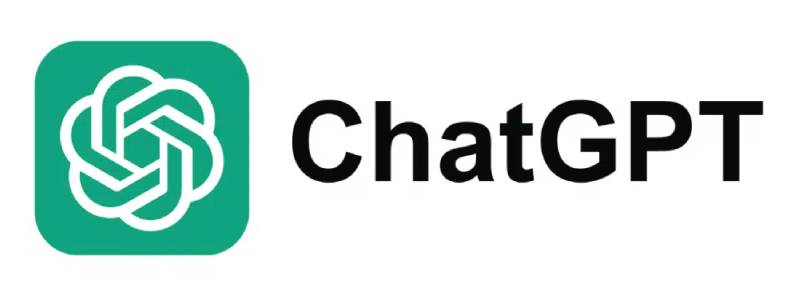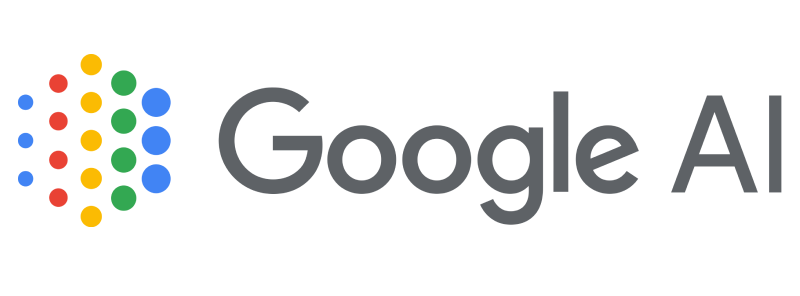Key takeaways
- AI document generators are advancing traditional documentation by using NLP and data integration to create dynamic, context-aware documents.
- Real-world adoption spans legal, sales, HR, and healthcare sectors, where automation improves accuracy, compliance, and efficiency.
- Choosing the right tool depends on features like customizable templates, integrations, ease of use, and strong security—Docupilot is highlighted as a standout option.
What comes to your mind when you think of document generation?
For most people, creating official documents like contracts, proposals, and business reports is a slow and laborious process. That’s why many companies have turned to automation software to streamline document creation and management—AI document generation is the next step in this evolution.
Imagine generating hundreds of accurate and highly customized documents in seconds, without touching a single template or writing a line of code. The shift to AI isn't just about saving time; it's about enabling businesses to scale operations, improve accuracy, and ensure compliance automatically.
In this comprehensive guide, you'll discover exactly what AI document generators are, explore real-world use cases, learn which key features to prioritize when evaluating solutions, and get an unbiased comparison of the top AI document generators available in the market.
What is an AI Document Generator?
An AI document generator is an advanced software application that uses artificial intelligence, primarily NLP and machine learning, to automatically create well-structured and error-free documents. It can use data from users, templates, or other custom data sources.
The advantage? More accuracy and efficiency. These tools rely primarily on fixed rules and static templates but can understand the context, generate dynamic content, and adapt to variations in data structure.
What kind of documents can you create with an AI document generator?
AI document generators can automate a wide range of business documents, including:
- Contracts and agreements (NDAs, employment agreements, service contracts)
- Sales documents (quotes, proposals, onboarding docs)
- HR documents (offer letters, onboarding forms, review templates)
- Legal filings (compliance reports, case summaries)
- Healthcare docs (patient summaries, discharge notes, insurance forms)
- Invoices and receipts
- Marketing assets (case studies, whitepapers, one-pagers)
AI Document Generator vs. Traditional Documentation Automation Tool
While both tools aim to streamline document creation, they serve different roles and operate on different levels of intelligence.
Core Components of AI Document Generators
AI document generators rely on several core technologies that enable them to create dynamic, context-aware content efficiently:
- Natural Language Processing (NLP): This allows the tool to understand and generate human-like text based on context, tone, and intent
- Dynamic Templates: Templates that adapt to input data, adjusting sections and formatting automatically, making document creation flexible and efficient
- Data Integrations: Seamless connections to external systems (CRMs, databases, etc.) enable automated data pulling, ensuring accurate and personalized documents
These components distinguish AI document generators from traditional tools, which rely on fixed templates and manual input.
Real-World Use Cases of AI Document Generators
Here are some real-world examples of how AI document tools are being used.
Key Features to Look for in AI Document Generation Tools
Here are the factors to evaluate to ensure that your selected AI document generation tool delivers results for your business.
1. Template customization flexibility
While most of the document generation tools provide a template library, not all of them provide an extensive one with various industry use cases.
What to evaluate:
- Can non-technical users build and modify templates easily?
- Can templates handle complex scenarios with conditional sections?
- How quickly can you make changes when business needs evolve?
How Docupilot excels: Docupilot offers an AI-powered template builder that even non-technical users can use to create and edit professional documents that perfectly match their brand. It also offers a growing library of industry-specific templates for quick starts.

2. Integration ecosystem
Even the best AI document generator is useless if it can't connect to your existing business systems. Evaluate how well each tool plays with your current tech stack.
Critical questions to ask:
- Does it integrate with your CRM, accounting software, and databases?
- How difficult is the setup process for integrations?
- Can it trigger bulk document generation automatically from your workflows?
- What happens when you need a custom integration?
Docupilot's integration advantage: Docupilot provides seamless integrations with over 70+ popular business tools, including Salesforce, HubSpot, Zapier, and Google Workspace.
3. Ease of use vs. power
There's often a trade-off between powerful features and user-friendliness. The best tools find the sweet spot where sophisticated capabilities remain accessible to everyday users.
Look for:
- Intuitive interfaces that don't require extensive training
- Pre-built workflows for common use cases
- Clear documentation and helpful support resources
- The ability to start simple and add complexity as needed
Why users choose Docupilot: Docupilot offers a harmonious blend of user-friendliness and advanced functionality. New users can start generating documents within minutes using pre-built templates, while power users can leverage advanced features like custom application programming interfaces (APIs) and complex conditional logic as their needs grow.

4. Collaboration and approval workflows
Modern document processes rarely happen in isolation. Evaluate how well the tool supports your team's collaborative processes.
Essential collaboration features:
- Multi-user access with appropriate permission levels
- Review and approval workflows that match your business processes
- Version control that prevents conflicts and lost work
- Integration with communication tools your team already uses
5. Security and compliance standards
This is where you can't afford to compromise, especially if you handle sensitive information or operate in a regulated industry.
Non-negotiable security requirements:
- Enterprise-grade encryption and data protection
- Compliance certifications relevant to your industry
- Audit trails and access monitoring capabilities
- Clear data governance and privacy policies
Docupilot's security excellence: Docupilot maintains SOC 2 Type II certification and GDPR compliance, with specialized features for healthcare (HIPAA), financial services, and legal sectors. Their enterprise-grade security includes end-to-end encryption, detailed audit trails, and granular access controls that help businesses maintain compliance while streamlining operations.
6. E-signatures and embedded editing
Modern AI document generators should offer embedded editors and native e-signature capabilities. This allows users to edit documents within the platform and send them for signature instantly, eliminating the need for toggling between apps.
7. Support quality and implementation assistance
Even the most user-friendly tool requires a learning curve. Evaluate the quality of support you'll receive during implementation and ongoing use.
Support factors to consider:
- Availability and responsiveness of customer support
- Quality of documentation and training resources
- Implementation assistance and onboarding programs
- Community forums and user resources
Docupilot's customer success approach: The Docupilot support team is available 24/7 on chat and sets up remote video call sessions whenever required. Plus, they provide extensive documentation and video tutorials, ensuring users get maximum value from day one.

Top AI Tools for Document Generation in 2025
1. Docupilot
Docupilot streamlines document creation with its AI-powered template builder, allowing users to generate dynamic documents effortlessly. Its intuitive interface supports conditional logic, dynamic tables, and integrations with platforms like Salesforce and Zapier, making it ideal for automating proposals, contracts, and reports.
What sets Docupilot apart is its embedded document editor and e-signature functionality, allowing teams to revise and sign documents directly within the platform. This is ideal for automating proposals, contracts, and reports without external tools.

2. Docusomo
Docusomo focuses on simplifying complex document workflows through AI-powered automation. The tool specializes in extracting key information from existing documents and using that data to generate new, structured content.
With strong integration capabilities, Docusomo helps organizations maintain consistency across their documentation while reducing the time spent on repetitive formatting and content creation tasks.

3. CheckBox
CheckBox combines AI with legal document expertise, making it particularly valuable for law firms and legal departments. The platform uses advanced NLP to help users create, review, and optimize legal documents.
Its AI capabilities extend to contract analysis and risk assessment, delivering insights that help legal professionals make informed decisions and ensure compliance.

4. Docubee
Docubee excels in automating the entire contract lifecycle—from data collection and content generation to eSignatures and system integration. Its AI features suggest content improvements, enforce consistency, and automate formatting.
What truly sets Docubee apart is its collaborative environment that enables multiple stakeholders to contribute while maintaining document integrity.

5. AiDocMaker
AiDocMaker positions itself as a versatile solution for creating professional documents across various industries. The tool uses machine learning algorithms to understand document patterns and suggest relevant content based on user inputs.
Its adaptability makes it suitable for everything from business proposals to technical documentation, with AI assistance that learns from user preferences to improve output quality over time.

6. Quillbot
QuillBot has expanded beyond its paraphrasing roots to become a comprehensive AI writing assistant for document creation. The platform offers advanced grammar checking, tone adjustment, and content optimization features that help users craft more effective documents.
Its AI-powered suggestions help improve the structure and clarity of the documents, making it valuable for individual users and teams working on important communications.

7. Formstack Documents
Formstack Documents automates the generation of documents by merging data from various sources into customizable templates. Its AI-powered features simplify template creation and support integrations with CRMs and other business tools, enhancing document automation workflows.

Wrapping Up
As we’ve seen, AI document generators are transforming how teams across legal, sales, HR, and healthcare create and manage paperwork. From minimizing manual effort to ensuring compliance and consistency, the benefits are both immediate and long-term.
However, not every solution will be suitable for your business. As you evaluate your options, look for solutions that combine ease of use with robust capabilities, like customizable templates, deep integrations, collaboration workflows, and security compliance. Docupilot strikes this balance perfectly, helping teams create smart, compliant documents faster and smarter.
Try Docupilot’s AI-powered builder today or book a free demo to see it in action.
FAQs
1. What makes Docupilot different from other AI document generators?Docupilot combines an AI-powered template builder with embedded document editing and e-signature functionality, allowing teams to create, revise, and sign documents within a single platform. It offers SOC 2 Type II certification and GDPR compliance with 24/7 customer support. The platform integrates with over 70 business tools including Salesforce, HubSpot, and Zapier.
2. How do AI document generators differ from traditional documentation automation tools?AI document generators use Natural Language Processing and machine learning to understand context and generate dynamic content, while traditional tools rely on fixed rules and static templates. AI generators can adapt to variations in data structure and create context-aware documents automatically. Traditional automation requires more manual configuration and offers less flexibility.
3. Can Docupilot handle complex legal documents with conditional logic?Yes, Docupilot supports advanced conditional logic that allows you to show or hide sections based on specific criteria. Non-technical users can build and modify templates with conditional sections for complex scenarios. The platform also offers dynamic tables and customizable templates that match your brand requirements.
4. What types of documents can be automated with AI document generators?AI document generators can create contracts and NDAs, sales proposals, HR documents like offer letters, legal filings and compliance reports, healthcare documentation, and marketing materials. They're particularly useful for invoices, receipts, onboarding forms, and patient summaries. These tools handle both simple and complex document types across multiple industries.
5. What security features should I look for in an AI document generator?Essential security features include enterprise-grade encryption, SOC 2 Type II certification, and GDPR compliance. Tools should offer audit trails, granular access controls, and multi-factor authentication. Industry-specific compliance like HIPAA for healthcare and specialized features for financial services are also important considerations.


















